In summer, the vadams are set out to dry. This year, we meet the makers: people painstakingly following traditional processes to make these crunchy treats using rice, millet, vegetables and even local greens
In summer, the vadams are set out to dry. This year, we meet the makers: people painstakingly following traditional processes to make these crunchy treats using rice, millet, vegetables and even local greens
Kallidaikurichi, a small town in Tamil Nadu, located on the banks of the River Thamirabharani, was once known for hand-made appalams. Today, only a few people continue to make them. For years, Uma Kannan’s mother-in-law was one of them, supplying to customers across Tamil Nadu. In 1998, when Uma took over, she decided to pivot, focussing on vadams, the sun-dried, rice-based crispsversions of papads .
“My husband was working overseas and my child was in school. So, my friend and I began to make vadams and sell them to my mother-in-law’s customers. Since then, my customers have been increasing steadily,” says Uma.
She is not the first homemaker-turned-entrepreneur to do so. Vadams are dear to Tamil families: almost every family has a carefully stored stash in the pantry, no matter where in the world they live.
These popular palm-sized accompaniments, usually paired with rice for lunch, are also fairly complex and time consuming to make. Traditional recipes use no preservatives, instead relying on hours of strong sunshine to dehydrate the batter into a shelf-stable crisp, which can be fried when needed. Hence, entrepreneurs who follow traditional processes, usually from small towns across Tamil Nadu, are finding enthusiastic buyers across the country.
For Uma, March to August are the busiest months, during which time her days begin at 4am. Her husband V Kannan, who has retired as a heavy machines mechanic and his younger brother, both actively help Uma by cleaning the terrace, then carrying all the paraphernalia including grass mats, cooked rice in large vessels, moulds and buckets of water and cloth napkins. At the end of the day, they roll the sheets and bring the dried vadams down. Normally, it takes five 5 to six 6 hours of sun drying for two to three2 to 3 days for the vadams to dry completely.
TAMIL NADU, CHENNAI 30-3-2022— FOR METRO PLUS:
Preparing Vathal in Chennai. Photo: Srinivasan KV/The Hindu
| Photo Credit: SRINIVASAN KV
Sago and rice vadam and koozh vadam with spices added
| Photo Credit: KARUNAKARAN M
“I think making vadams is rather easy,” says Uma, “Raw rice is washed, soaked, shade-dried and ground. I add a little sago flour to the rice flour to get crispiness and texture. This mixture is cooked to the required consistency depending on the type of vadam I am making. While cooking, I add salt, green chillies, asafoetida, and cumin or omam (caraway seeds), and after I switch off I add lemon juice (which acts as a preservative).”
TAMIL NADU, CHENNAI 30-3-2022— FOR METRO PLUS:
Preparing Vathal in Chennai. Photo: Srinivasan KV/The Hindu
| Photo Credit: SRINIVASAN KV
Uma uses approximately 10 kilograms of rice per week to make various types of vadams during the peak season, March to July. Her specialty is traditional versions such as koozh vadam, ribbon vadam, onion vadam, ela vadam and sambar vadam. Customers carry Uma’s unique sambar vadams in particular across the globe, to Canada, US, Europe and UK.
“I grind ash gourd, then soak urad dal, channa dal and tuar dal for a few hours in that paste. Then this mixture is ground into a coarse paste with asafoetida and red chillies. Finally, whole mustard is added, it is shaped like marble size balls and sun dried,” Uma says, adding that once fried, these vadams can be added to moru kulambu, spinach and sambar. These are protein rich and can be supplemented instead of vegetables during the rainy season when we may not get fresh vegetables.
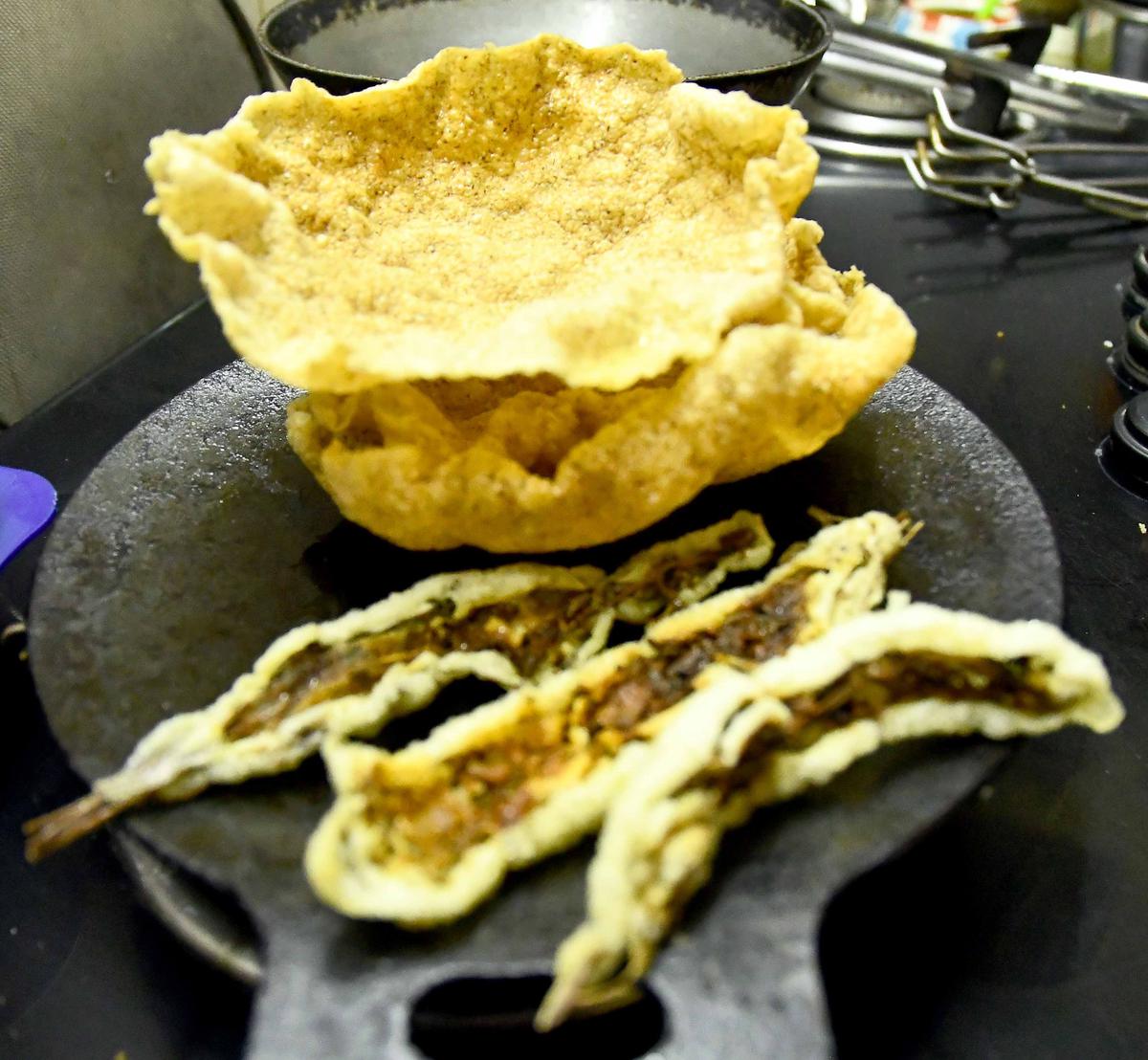
Fried veppam poo (Neem flower) vadam and Mappila samba ela vadam.
| Photo Credit: KARUNAKARAN M
Gita Rajamani, the 75-year-old Kallidaikurichi-based YouTuber recalls how, in her youth, vadams were fried on special occasions like Aadi perukku day and Kanu Pongal, day, as well as during the rains. “I remember my grandmother preparingsteam-cooked a special pullapetha vadam, made using the juice of pirandai ( Cissus quadrangularis) , which was given to new mothers during post-partem period. Ela vadams (vadams steam cooked on banana leaf, and then dried) were roasted over a kumatti aduppu (a traditional slow cooking oven made of cast iron and fuelled by charcoal), were also served to these new mothers as it is easy to digest and has no oil,” she says.
For ela vadams, processed, cooked and fermented rice batter is spread on a banana leaf or on steel plates and steamed, does not require sun drying but can be left to dry indoors.
Radha Parthasarathy also depends on family recipes, but has managed to take them a step ahead. Once managing Sri Annapoorani Foods — including its rather unusual veppampoo (neem flower)vadam — she recently shut down her unit at Thandalam, near Arkakonam, and sold her equipment to Gandhigram Rural University.
Radha Parthasarathy also depends on family recipes, but has managed to take them a step ahead. Once managing Sri Annapoorani Foods — including its rather unusual veppampoo (neem flower)vadam — she recently shut down her unit at Thandalam, near Arkakonam, and sold her equipment to Gandhigram Rural University. Going forward they will be marketing the products developed by her. The women Radha trained for two decades, are now training the staff at the university, so their products will be available again in a few weeks time. “Our vadams, made with my family recipes, were immensely popular. We were making sago vadams with added spices, and another variety with onions,” says the octogenarian.
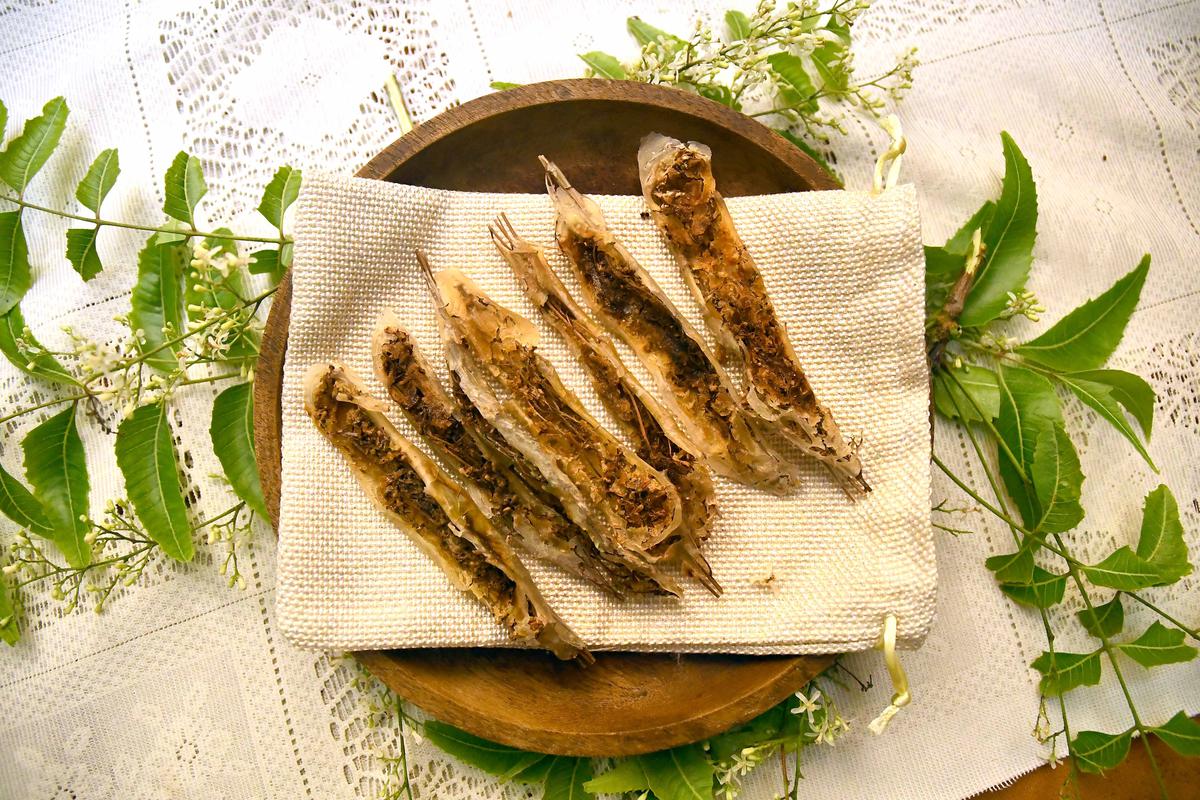
Veppam poo (Neem flower) vadam is a Chettinad special and made when ne tree blooms in April.
| Photo Credit: KARUNAKARAN M
Radha’s repertoire included the rather unusual veppampoo (neem flower)vadam: a super hit product. “I was invited for lunch at a friend’s house many years ago, where I tasted this. I learnt that vadam was made by just a few Chettiar families in Kanadukathan region. The following summer, I sent our cook to go there and learn to make it,” she says. To make these, a bunch of neem flowers are gently dipped into the koozh (fermented rice flour cooked to a pourable consistency with salt and spices), then placed on a clean thin white cloth and dried in the sun. The Gandhigram Rural Univesity will be marketing vadams and podis developed by Radha, through its website and in select outlets in Chennai.
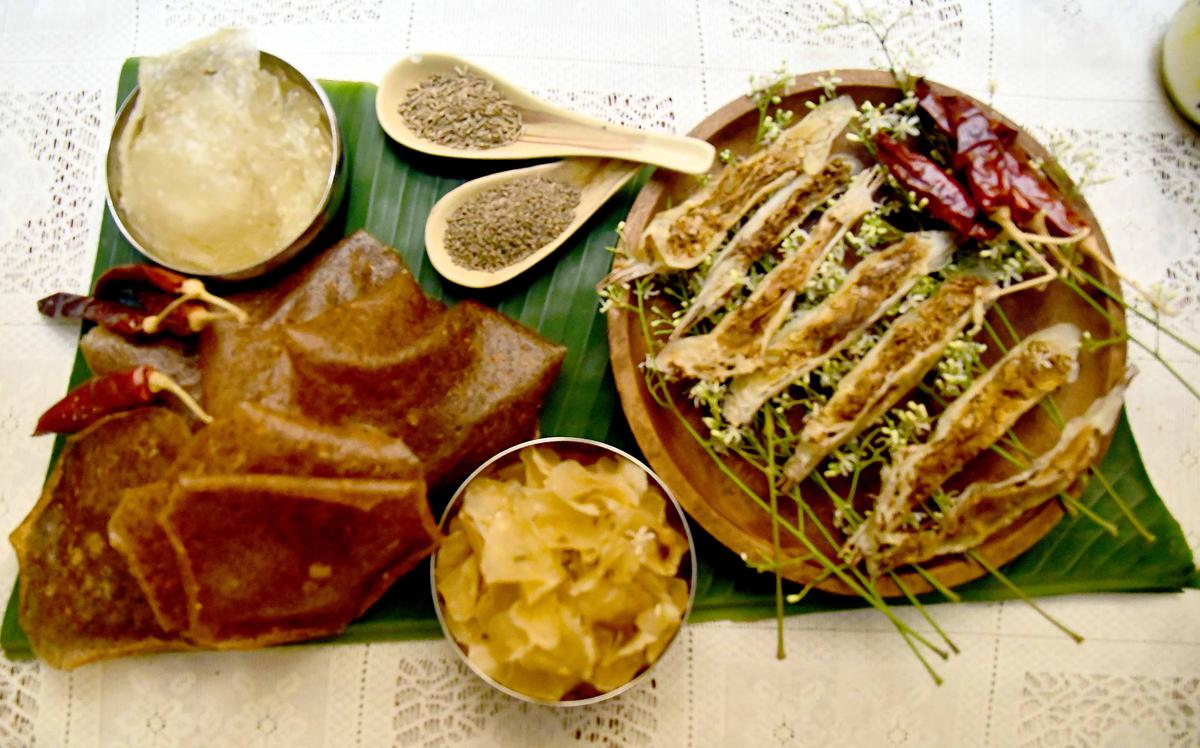
An assortment of differnt types of vadams.
| Photo Credit: KARUNAKARAN M
Though vadams are traditionally made with rice, millet vadams have made a debut in Madurai. Kavitha Balaraman, who spearheaded a Community Development Initiative, at Keeranur, Madurai, as part of HCL Foundation and Entrepreneurship Development Institute of India’s Prime Papads Training, says about 34 women from the slums of Keeranur were trained to prepare millet vadams at their homes in 2019. They now sell them in local markets in Madurai and deliver across Tamil Nadu.
“The idea is to enable them to work, and earn a livelihood, from the comfort of their homes. Vadams are familar, says Kavitha, adding that the training focussed on ways to standardise taste, style and quality of local and traditional versions. The women of Keeranur now make a wide range of vadams: with millets (mostly kodo millet or varagu), vegetables (beetroot, carrot, onion, tomato), herbs (mint, coriander, vallarai (Indian penny wort), mudakkathaan (balloon wine), thoodhuvalai (purple fruited pea egg plant) and spices (pepper, cumin, khus khus. fennel, omam). “Currently, we are experimenting with betel leaf vadam,” says Kavitha.
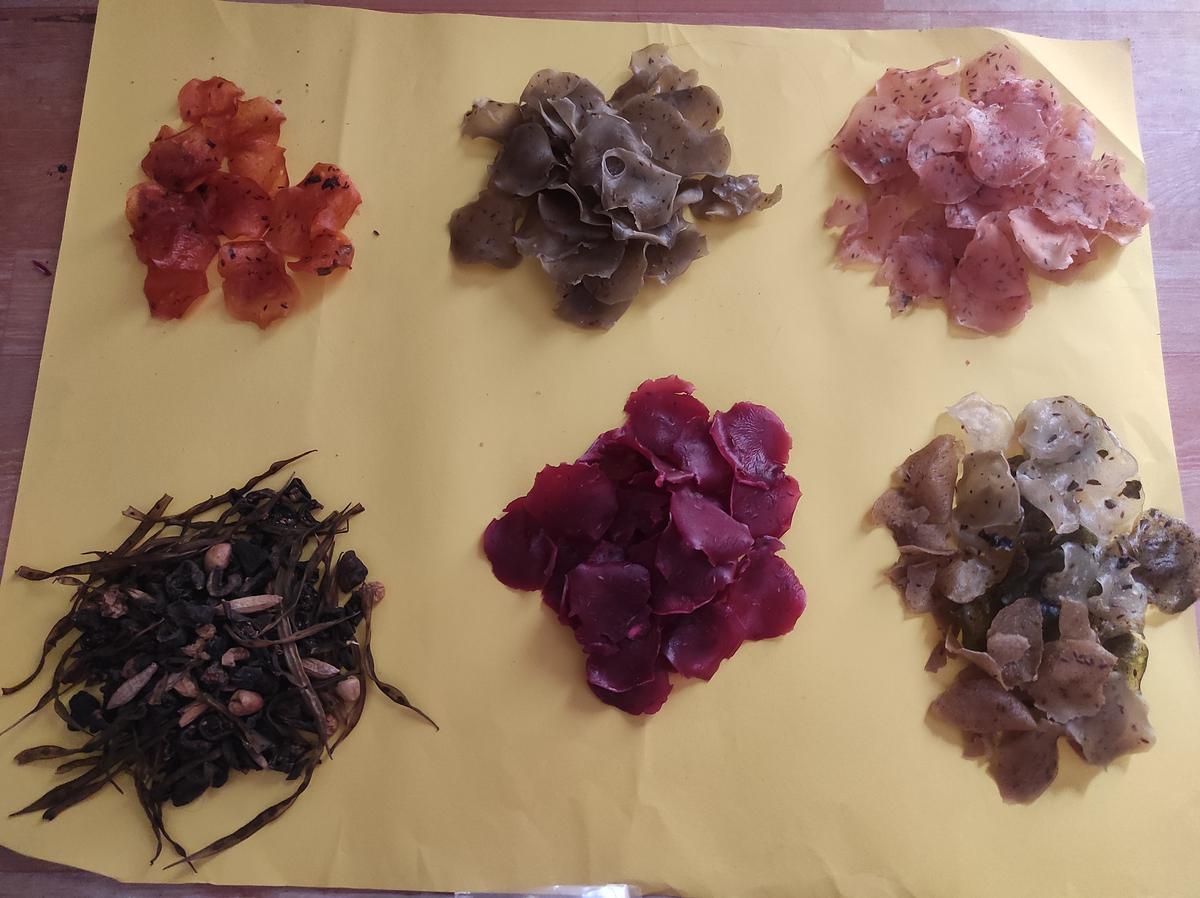
Millet vadam with vegetables and herbs made by the women of Keeranur, Madurai.
Vegetables and herbs aside, there is scope for creativity with other ingredients too. M Menaka, who runs an organic store called Mannvasanai in Chennai, has been making ela vadam using heritage rice varieties such as mappillai samba, kullakar, karunkuruvai and kattuyanam. . “I make these vadams based on pre-orders and add spices to suit the taste of different types of rice. No additives or preservatives are added but the shelf life is three to four months,” says Menaka.
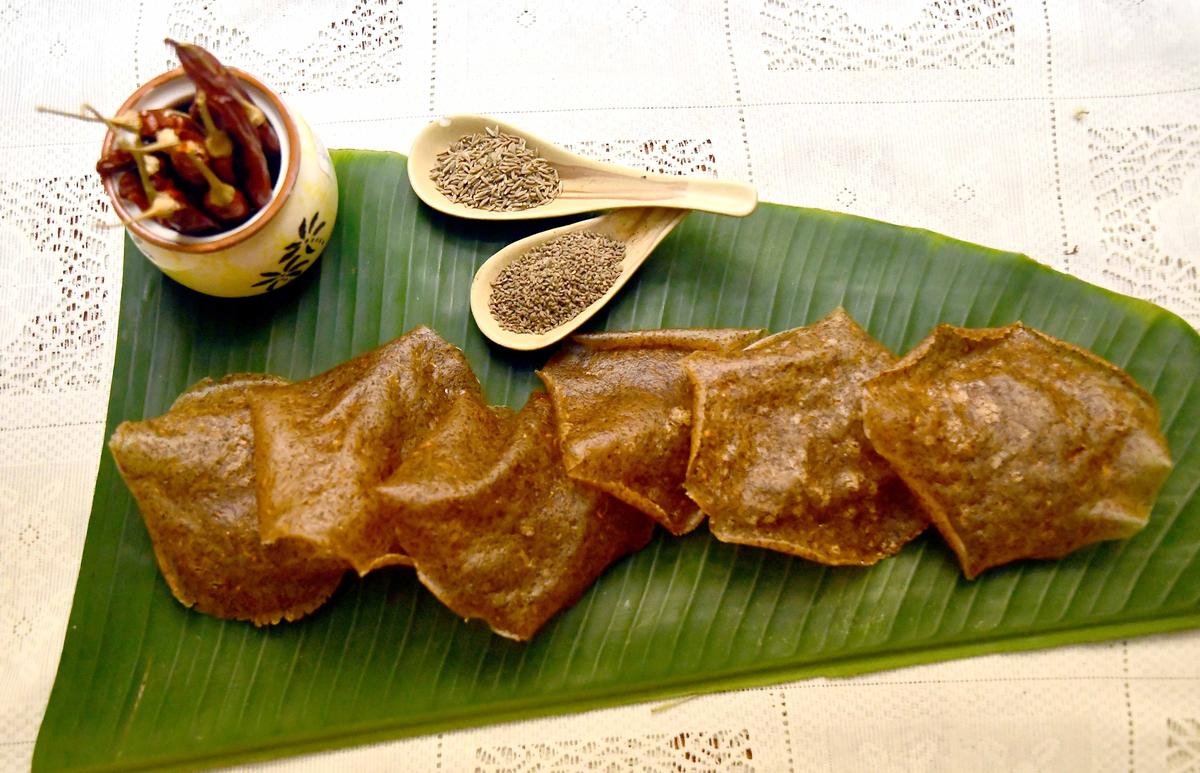
Mappila samba rice ela vadam available at Mannvasanai.
| Photo Credit: KARUNAKARAN M
Similarly, Priyanka Navneeth of Spirit of the Earth, a Chennai-based organisation that focusses on conservation of heritage produce, says they began marketing heritage rice vadams made by rural women at its Alwarpet store in late 2019. This summer they are resuming the project. “We have 10 women from Thiruporur, Rajapalayam and from the peripheral areas of Chennai making vadams for us. These women make different types of koozh vadams.”
Maithreyi Lakshmi Ratan and her husband Ajay Nityananda, relocated to Tiruvannamalai in Tamil Nadu from Chennai nine years ago, to start an organic farm. They began working with the locals to develop chemical-free cleaning products, starting Wild Ideas in 2014. Today over 100 women from 20 villages in the region are employed. Maithreyi began to train these women in preparing vadams : these are now delivered pan-India and overseas.
“Following my mother’s recipes we started off with ela vadams made the traditional way: raw rice or millet is ground with spices, fermented and thinly spread in circular shapes on a banana leaf. It is steamed, dried indoors and deep-fried in oil,” says Maithreyi, adding that it was very well received. She adds, “Then we manufactured ragi, thinai (foxtail millet) and kuthiraivali (barnyard millet) vadams. We recently added koozh vadams where ground rice batter is fermented and cooked with sago and other spices, moulded and squeezed in desired shapes and sun-dried,” says Maithreyi.
TAMIL NADU, CHENNAI 30-3-2022— FOR METRO PLUS:
Preparing Vathal in Chennai. Photo: Srinivasan KV/The Hindu
| Photo Credit: SRINIVASAN KV
Memories from her childhood and younger days surfaces as Gita Rajamani talks about vadams. “They are a must have for Adi perukku festival and Kanu Pongal, when four or five types of variety rice such as puliyodare, lemon rice, coconut rice, curd rice are made. Buckets full of vadams will be kept ready as side dish. Especially during the rains, it will be rasam or puli kulambu with vadams. The unique taste of half dried vadams is priceless. One must taste the freshly steamed ela vadams as tiffin, a delicacy, you will not get in any restaurants In our town, the vadam making process means fun-filled days, as women in the family get together and make huge quantities of vadams and store them in big drums. The joy those days was in sending something special and handmade to friends and relatives.”
A snack for all seasons
Uma Kannan , Kallidaikurichi: 7708158373
Prime Pappad, Madurai: 9841788990
Mannvasasai, Chennai: 98841 66772
Wild Ideas, Tiruvannamalai: 9786145465
Spirit of the Earth, Chennai: 2498 7955
Vaer Organics, Chennai: 944667070
Terra Earth Food, Chennai: 95513 95522
























